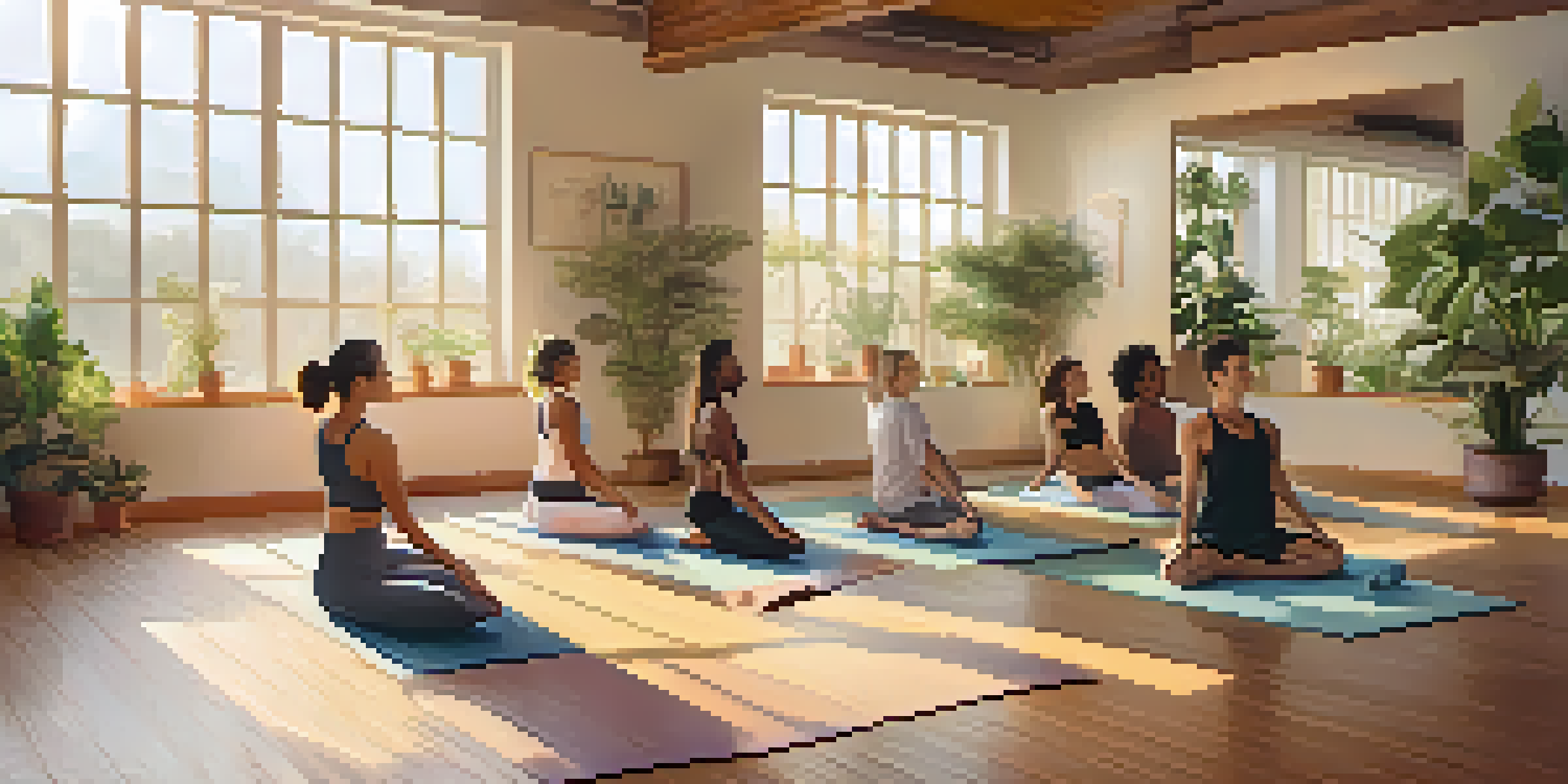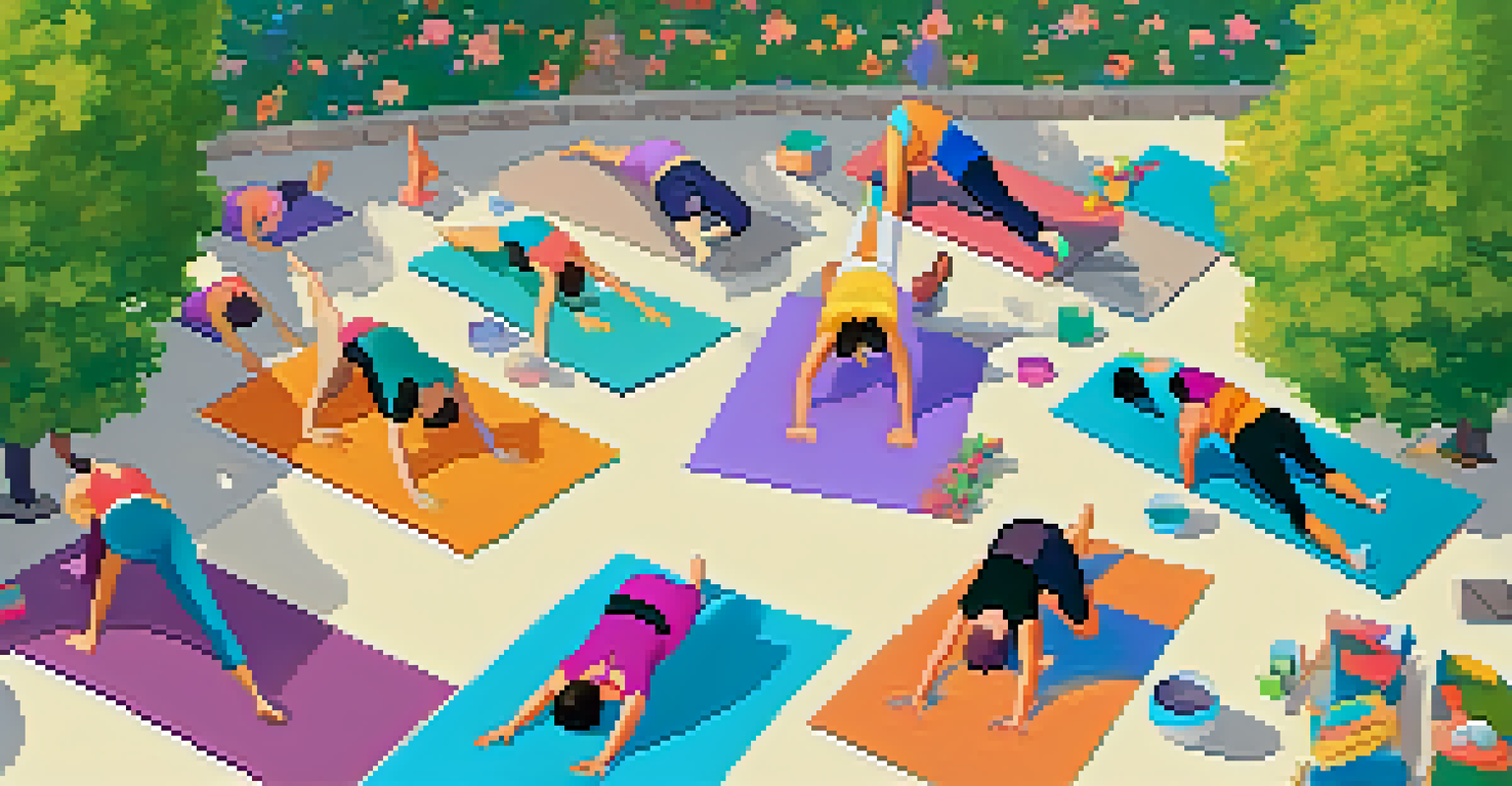How Yoga Influences Flexibility and Joint Health

Understanding Flexibility and Joint Health
Flexibility refers to the range of motion in our joints and muscles, which is crucial for overall mobility. When we think of flexibility, we often picture gymnasts or dancers, but it’s essential for everyone, regardless of age or fitness level. Good joint health means our joints function properly, allowing us to perform daily activities comfortably.
The mind is everything. What you think you become.
Yoga is a practice that emphasizes stretching and strengthening, making it a natural ally for enhancing flexibility. By incorporating various poses, yoga helps elongate muscles and improve the elasticity of connective tissues. This not only boosts your flexibility but also aids in preventing injuries related to tight muscles and stiff joints.
Moreover, maintaining flexibility can play a significant role in joint health. When our muscles are flexible, they can better support the joints, reducing wear and tear. In essence, improved flexibility can lead to healthier joints, creating a win-win situation for your body.
The Role of Yoga Poses in Increasing Flexibility
Yoga comprises a variety of poses (asanas) specifically designed to stretch and strengthen different muscle groups. Poses like Downward Dog and Cobra pose are excellent for opening up the spine and hamstrings, enhancing overall flexibility. Regular practice of these poses can gradually increase the range of motion in both muscles and joints.

Additionally, each pose encourages mindful breathing, which is crucial for relaxation and allowing the body to release tension. When we breathe deeply, we send oxygen to our muscles, helping them relax and stretch more effectively. This combination of movement and breath makes yoga an exceptional practice for flexibility.
It’s important to remember that consistency is key. Just like building muscle strength, improving flexibility takes time. With regular practice, you’ll likely notice a marked improvement in your flexibility and overall joint health.
How Yoga Benefits Joint Health
Joint health is vital for all physical activities, and yoga promotes this by focusing on low-impact movements. Traditional exercises can sometimes put strain on joints, but yoga allows for smoother, gentler movements. This reduces the risk of injury while still providing a solid workout for your joints.
Yoga is the journey of the self, through the self, to the self.
Many yoga poses help to strengthen the muscles around the joints, providing better support and stability. For example, Warrior poses target the legs and hips, which can help protect the knees and lower back. Stronger muscles mean less strain on your joints, leading to better longevity in joint function.
Moreover, yoga encourages synovial fluid production, which lubricates the joints. This means that not only do you gain strength and flexibility, but you also promote better joint function over time. Healthy joints are less prone to stiffness and discomfort, making yoga an excellent addition to your wellness routine.
Incorporating Yoga into Your Routine
If you're new to yoga, starting with a beginner class or following online tutorials can be very helpful. Many resources are available, including apps and YouTube channels, which make it accessible for everyone. Finding a style that resonates with you—be it Hatha, Vinyasa, or Yin—can make your practice more enjoyable.
It’s also important to listen to your body and progress at your own pace. Yoga isn’t about pushing your limits but rather finding comfort in your range of motion. Modifications are available for many poses, allowing you to gradually work towards more challenging variations without overexerting yourself.
As you become more comfortable with your practice, you may want to explore different classes or workshops. This exploration can deepen your understanding of how each pose affects your body and enhances your flexibility and joint health.
Mindfulness and Its Impact on Flexibility
Yoga is not just about physical flexibility; it also promotes mental flexibility. Practicing mindfulness during yoga helps you become more aware of your body’s limits and teaches you to respect them. This mental aspect can lead to reduced stress, which is often a contributor to muscle tension.
When you're mindful, you're more likely to notice areas of tightness in your body and can gently work on them during your practice. This awareness can help you avoid injuries and improve your overall flexibility over time. It’s a holistic approach that benefits both body and mind.
Moreover, this mindfulness extends beyond the yoga mat. By practicing it daily, you may find yourself applying this awareness to other areas of your life, resulting in a more balanced and flexible approach to challenges, be they physical or mental.
Common Yoga Poses for Flexibility and Joint Health
Several specific yoga poses are particularly beneficial for enhancing flexibility and supporting joint health. Poses like the Triangle Pose, Pigeon Pose, and Seated Forward Bend target various muscle groups, promoting lengthening and relaxation. Integrating these poses into your routine can make a noticeable difference in your flexibility over time.
Each of these poses also encourages proper alignment and balance, which are essential for joint stability. By focusing on alignment, you not only improve your flexibility but also enhance the overall function of your joints. It’s like giving your joints a little tune-up during your practice.
As you incorporate these poses, consider holding each for a few breaths to allow your muscles to adjust and stretch. This practice encourages deeper stretching and reinforces the connection between your mind and body, ultimately enhancing both flexibility and joint health.
Tips for Maximizing Benefits from Your Yoga Practice
To truly benefit from yoga, it’s essential to establish a consistent practice. Setting aside dedicated time each week for yoga can help you stay accountable and notice improvements in your flexibility and joint health. Even short sessions can be effective, so find a rhythm that works for you.
Additionally, complementing your yoga practice with other forms of exercise can yield even better results. Activities like swimming or walking can improve cardiovascular health, while yoga focuses on flexibility and strength. This well-rounded approach ensures that all aspects of fitness are addressed.

Finally, remember to be patient with yourself. Flexibility and joint health are long-term goals, and progress may be gradual. Celebrate small achievements along the way, as each step brings you closer to a more flexible and healthier you.